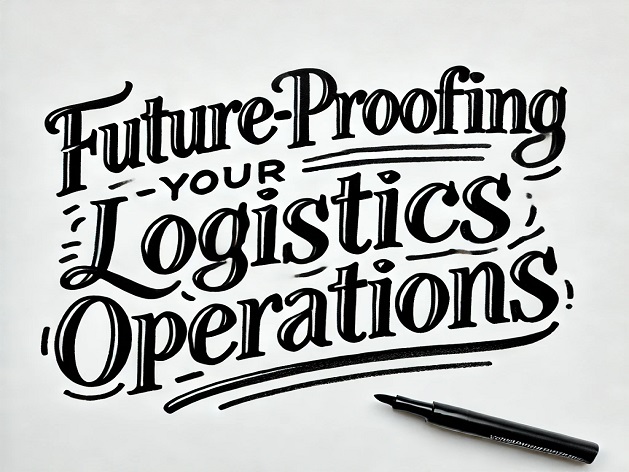In today’s fast-evolving supply chain landscape, staying competitive requires adopting cutting-edge technologies that not only optimize operations but also anticipate future needs. Businesses must focus on innovation to remain resilient, agile, and sustainable. Here’s a look at some of the most impactful emerging trends in logistics, with a focus on artificial intelligence (AI), robotics, and sustainability.
1. Artificial Intelligence (AI) and Machine Learning (ML)
AI is revolutionizing supply chain operations by providing predictive analytics, optimization tools, and automation solutions that enhance decision-making processes. Its applications in logistics are widespread and can provide significant benefits:
- Demand Forecasting and Inventory Optimization: AI algorithms help businesses forecast demand more accurately, allowing for better inventory management. This reduces the risk of overstocking or stockouts, ultimately improving cash flow and customer satisfaction.
- Route Optimization: AI-powered route planning tools can analyze multiple factors like traffic patterns, weather conditions, and fuel consumption to suggest the most efficient routes, reducing costs and delivery times.
- Chatbots and Customer Service: AI-based customer service tools, such as chatbots, streamline communication with clients and improve response times, leading to better customer experiences.
- Data-Driven Insights: By analyzing historical data, AI can uncover inefficiencies, predict potential disruptions, and recommend solutions before problems escalate.
2. Robotics and Automation
The integration of robotics into supply chain operations has redefined logistics by enhancing speed, precision, and efficiency:
- Warehouse Automation: Autonomous mobile robots (AMRs) are transforming warehouse operations, taking over tasks like picking, sorting, and transporting goods. These robots work alongside human employees, reducing physical strain and increasing overall productivity.
- Automated Guided Vehicles (AGVs): AGVs are used in warehouses and distribution centers for transporting goods across long distances within facilities. This reduces manual labor and speeds up internal processes.
- Drones for Last-Mile Delivery: While still in the experimental stages, drone deliveries are becoming a promising option for last-mile logistics, particularly in rural or hard-to-reach areas.
- Robotic Process Automation (RPA): RPA automates repetitive back-office tasks like order processing, invoice handling, and shipment tracking, freeing up employees to focus on higher-value activities.
3. Sustainability Initiatives in Logistics
Sustainability is no longer a buzzword but a key focus area for future-proofing supply chain operations. With growing pressure from governments, consumers, and investors, companies must integrate eco-friendly practices into their logistics strategies:
- Green Transportation: The push towards electric vehicles (EVs) and alternative fuels is becoming central in reducing the environmental impact of freight transportation. Companies are increasingly adopting EVs for last-mile delivery and using biofuels for long-haul transportation.
- Carbon Footprint Tracking: Logistics providers are now using AI and data analytics to monitor and reduce carbon emissions. Tools that track energy consumption and greenhouse gas emissions at every stage of the supply chain allow companies to make informed decisions about sustainability improvements.
- Eco-friendly Packaging: As sustainability becomes a priority, many businesses are turning to recyclable, biodegradable, or reusable packaging to reduce waste. The implementation of circular economy models, where products and materials are kept in use for as long as possible, is also gaining traction.
- Energy-efficient Warehousing: Sustainable warehouse practices include using solar panels, energy-efficient lighting, and automation systems that reduce power consumption. Green building certifications like LEED (Leadership in Energy and Environmental Design) are also becoming popular, showcasing a commitment to sustainability.
4. Blockchain for Transparency and Security
Blockchain technology is transforming the way data is shared across the supply chain by providing secure, transparent, and immutable records. This has multiple implications for future-proofing logistics:
- Traceability and Accountability: Blockchain enables end-to-end visibility of products, helping businesses trace the origin and journey of goods. This can improve quality control, prevent counterfeiting, and enhance compliance with regulations.
- Smart Contracts: Blockchain-powered smart contracts automate agreement execution between supply chain partners, ensuring payments are made upon meeting specific conditions, thereby reducing disputes and administrative work.
5. Internet of Things (IoT) and Real-Time Tracking
IoT technology has enabled real-time visibility of assets, from cargo shipments to equipment health:
- Enhanced Visibility: IoT sensors allow companies to track shipments in real time, providing valuable insights into location, temperature, and handling conditions. This level of visibility reduces the risk of theft, delays, or damage during transportation.
- Predictive Maintenance: By attaching IoT devices to machinery, companies can monitor equipment health and predict when maintenance is needed, preventing costly breakdowns and downtime.
Conclusion
As logistics operations become increasingly complex and customer expectations continue to rise, future-proofing your supply chain requires embracing the latest technological innovations. AI, robotics, sustainability efforts, blockchain, and IoT are reshaping the landscape of logistics, creating a more efficient, agile, and transparent ecosystem. By integrating these technologies into your operations, you not only improve today’s performance but also ensure that your business is prepared for the challenges of tomorrow.


